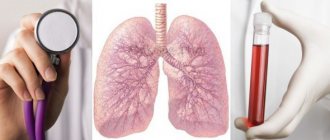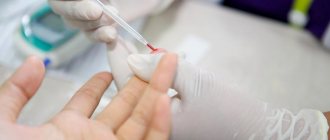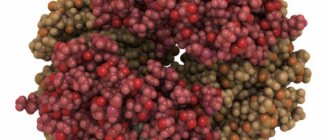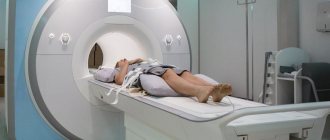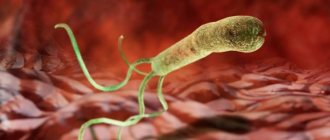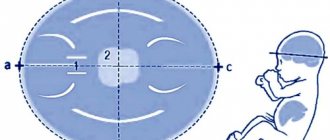Types of genetic analysis
Depending on the purpose of the study, the following types of genetic analysis are distinguished:
- DNA analysis;
- karyotyping.
DNA analysis
A DNA (deoxyribonucleic acid) blood test is a test that allows you to identify a person by studying a unique nucleotide sequence. This “genetic trace” is individual for each person (with the exception of identical twins) and does not change throughout life.
Molecular genetic blood tests can determine:
- Possible diseases. DNA testing of biological material allows for timely detection of hereditary diseases. If there are cases of mental disorder or oncology in the family, this test determines the predisposition to the development of a similar problem in descendants.
- Individual intolerance to medications. In cases where there is suspicion of hypersensitivity to a certain group of drugs, DNA analysis may be indicated.
- Relation degree. One of the most common reasons for conducting research is the need to establish family ties between people.
- Factors of infertility. In reproductive centers, couples who have difficulty conceiving are required to undergo a DNA test.
- Tendency to develop alcoholism or drug addiction. Such a predisposition can be established by identifying the genes responsible for the synthesis of enzymes for the breakdown of alcohol molecules and other compounds.
Karyotyping
Karyotyping refers to a technique of cytogenetic analysis, thanks to which it is possible to study the chromosome set of a person. A similar examination is carried out among married couples wishing to have a child.
Karyotype is the chromosome set of each person, containing a complete description of the characteristics of all its components, including:
- quantity;
- shape;
- size, etc.
The human genome contains 46 chromosomes, which, in turn, are divided into 23 pairs.
Autosomal (first 44) - intended for the transmission of hereditary characteristics: (hair color, eyes, anatomical features).
The last chromosome pair is the sex chromosomes, with the help of which it is possible to determine the karyotype:
- women (23XX);
- men (23XY).
The main objectives of karyotyping are:
- Determination of discrepancies in the chromosome set of spouses. The analysis is carried out to prevent the birth of children with developmental defects or other genetic pathologies.
- Identification of the number and affiliation of chromosomes, characteristics of their structure.
- Establishing the causes of infertility, manifested in changes in the multiplicity of chromosomes.
How are DNA test results deciphered?
DNA testing, decoding and examination of the genome takes place in several main stages:
- Researchers isolate cells of interest. At this stage, it is possible to determine the presence of infections and viruses, even if the content of foreign DNA in the sample is the minimum possible.
- Synthesis (reproduction) of isolated cells using the polymerase chain reaction method. It is thanks to this method that it is possible to conduct a detailed study of the genetic code with a minimum amount of biomaterial for research.
- Sequencing. Determination of the nucleotide and amino acid sequence of DNA. At this stage, either specific sections of deoxyribonucleic acid are isolated for deeper analysis, or the entire chain, if it is necessary to conduct a comprehensive study. These areas are so small that for ease of study they have to be tinted with special fluorescent paint.
- Decoding the results. A competent specialist draws up a detailed report on the results of the study and recommendations for it, if necessary.
When can a genetic blood test be prescribed?
In addition to personal initiative, the doctor often recommends genetic testing due to certain factors.
Among the mandatory medical indications for conducting the study are the following:
- living in an environmentally unfavorable area;
- infertility for which the cause has not been established;
- age from 35 years (carried out even among couples where at least one spouse is over 35 years old);
- unsuccessful multiple attempts at artificial insemination;
- pathologies in the development of spermatogenesis without an established cause;
- hormonal disorders in women;
- presence of genetic diseases in the family;
- constant contact with chemicals;
- marriages between close relatives;
- recorded cases of spontaneous abortion, including premature birth and stillbirth.
Analysis during pregnancy
A timely DNA test shows the baby’s developmental defects even before birth and will help create a genetic map of the child. Most often, in this case, a “genetic pairing” study is prescribed.
Invasive
To carry out the analysis, it is necessary to collect biological material not only from the mother, but also from the fetus. In this case, during the research, penetration occurs through the woman’s abdominal cavity. The invasive diagnostic method makes it possible to finally confirm the preliminary diagnosis, but carries a certain threat to the baby.
Features of the analysis:
- The test can be carried out already in the first trimester of pregnancy; venous blood is taken for testing.
- Genetic pair analysis involves the study of specific protein structures (beta-hCG and PPAP-A), which are considered the main indicators of the presence of genetic pathologies.
- It is prescribed in combination with an ultrasound of the uterus and analysis of the karyotype of the parents. To study the karyotype, blood is taken from the baby's umbilical cord.
- In conclusion, the doctor assesses the degree and risks of developing hereditary pathologies in the child, prescribes treatment and records the data in the genetic map.
Non-invasive
Non-invasive diagnostic techniques have emerged in response to the possible complications and risks of invasive genetic testing. The most popular such method is Tranquility NIPT.
Analysis Features:
- To obtain a DNA result, it is necessary to examine the mother's blood. Starting from the first month of pregnancy, the circulation of fetal cells is activated in the mother’s body. Towards the end of the first trimester, their concentration reaches a limit, which is sufficient to be determined in genetic analysis.
- The study has a high level of reliability. The accuracy of diagnosing Down syndrome is more than 99.9%.
- The test does not pose a risk to the development of the fetus or the health of the mother.
- The study is carried out at 10-12 weeks of pregnancy.
- The results are prepared within 15 working days.
Genetic analysis of newborns
With timely diagnosis of pathologies and properly selected treatment, many problems can be solved from birth.
Features of the study:
- Blood is taken to test for genetic diseases. For full-term babies, sampling takes place on the 4th day after birth, and for premature babies - on the 7th day.
- If a child is suspected of having a genetic pathology, the doctor will prescribe further examination. The type of diagnosis depends on the nature of the disease.
- Genetic analysis of newborns makes it possible to timely determine the presence of pathologies such as cystic fibrosis, adrenogenital syndrome, phenylketonuria and others.
- To obtain additional information or diagnose other diseases, a DNA test is prescribed. Venous blood is used as biological material.
"Paternity Test"
Establishing kinship is used not only in the medical field, but is also often necessary to resolve legal disputes. Since parents pass on their genetic material to the child, this analysis reveals matching areas in relatives. A high percentage of matches means a high probability of proving a relationship.
Unlike other genetic tests, biological material for paternity testing can be taken from different parts of the body. The most commonly used scraping is the inside of the cheek. Paternity testing is a lengthy process. But in this case, it is better to trust the specialists and wait until the results are compared many times.
The accuracy of establishing kinship with this method is more than 99%.
Instructions for collecting material to perform a genetic test to establish paternity at home. The video was taken from Evgeniy Ivanov’s channel.
Genetic analysis as a key method of predictive medicine
The study of genetic material allows us to identify possible diseases in the future. This is due to the fact that not all genotype failures result in one or another pathology. In most cases, environmental factors also play an important role . If you do a DNA test in a timely manner, you can avoid the development of many incurable diseases.
Such pathologies include:
- atherosclerosis;
- diabetes;
- bronchial asthma;
- hypertonic disease;
- oncology.
Thanks to the development of medicine, several methods are now available to study genetic information. Each option is selected depending on the possibilities and the case.
Basic techniques:
- Microchip technology. In the diagnostic process, a DNA chip is used, created by analogy with an electronic chip to isolate multiple DNA strands. Modern microchips are capable of identifying millions of different mutations and measuring gene expression. The chip itself is made of glass or silicone, onto which DNA is applied during a machine printing process.
- Comparative genomic hybridization. The technology involves analyzing changes in the number of copies of relative ploidy levels in the material under study in relation to the control sample, which is the reference.
- FISH technology. The principle of operation of the method is based on the phenomenon of hybridization—binding the DNA of the patient sample under study with a DNA probe.
- Polymerase chain reaction. The technique involves a rapid increase in the concentration of isolated DNA sections in human biological material to determine a particular pathology.
The predictive function of genetic analysis is to predict the development of possible pathologies.
What kind of analysis is this
Genetic pairing is an analysis of the venous blood of a pregnant woman for possible chromosomal abnormalities in the unborn child. This study is otherwise called biochemical screening; it must be done at the obstetric stage of 11 - 13 weeks.
First, the patient undergoes an ultrasound. Using this study, the size of the neck fold in the embryo and the condition of the nasal bones are determined. If there are deviations in these indicators, this may indicate possible Down syndrome in the unborn child.
Then the woman's blood is taken for analysis. In laboratory conditions, the level of the beta subunit of human chorionic gonadotropin (beta-hCG) and pregnancy-associated plasma protein A (PAPP-A) is determined. These indicators are markers of the risk of genetic mutations.
Are there any contraindications and restrictions?
In order to do a genetic analysis, doctors do not identify significant contraindications and restrictions. The procedure can be performed by people of any age and pregnant women. The only note, when it comes to expectant mothers, is that an invasive genetic test is recommended after 18 weeks.
Before conducting the study, it is advisable to exclude the following:
- smoking;
- consumption of alcoholic beverages;
- kisses;
- chewing gum use.
What to do if there are deviations from the norm
What to do if a genetic double showed the likelihood of chromosomal diseases in the baby? First of all, you should not panic and make a hasty decision to terminate your pregnancy. It should be remembered that biochemical screening only indicates a possible risk of genetic abnormalities.
If there are deviations from the norm in screening, the doctor refers the patient for more detailed diagnostics. In early pregnancy, amniotic fluid analysis (amniocentesis) or chorionic villus sampling is performed. These are invasive procedures and should only be done if there is a strong suspicion of chromosomal abnormalities in the fetus.
During amniocentesis, a puncture is made in the abdominal wall or posterior fornix of the vagina and amniotic fluid is collected for examination. This test detects chromosomal abnormalities with a 99.5% probability.
When examining chorionic villi, material is taken through a puncture in the abdominal wall or a catheter that is inserted into the cervix. This analysis identifies more than 3,000 possible diseases in the fetus. The reliability of the results is 99%.
Unfortunately, many women refuse to undergo biochemical screening. They are afraid to hear about a bad study result. However, every pregnant woman needs to undergo such a test. After all, it is better to find out early about the possible risk of chromosomal diseases and undergo additional examinations. In addition, screening results are not always confirmed by amniocentesis or chorionic villus testing.
How is it carried out?
The main biological material for research is blood. Most often, venous blood is needed.
Order of conduct:
- Before the procedure, the patient must fill out a questionnaire. It is important to provide accurate data as this can significantly affect the outcome of the analysis.
- Next, the patient is taken to the office where the material is collected. It is better to take a blood test on an empty stomach, preferably in the morning.
- The resulting biological material is placed in a test tube and sent for testing to the laboratory.
Indications
Genetic pairing is not a mandatory analysis. However, obstetricians and gynecologists strongly recommend that women undergo biochemical screening. If there are deviations in the genetic pairing indicators, a more detailed study will be required. This will help timely track genetic mutations in the fetus.
In some cases, such an analysis is mandatory:
- If the patient is over 35 years old.
- If a woman already has a child suffering from chromosomal abnormalities.
- If the patient has relatives with genetic mutations.
- If a woman has suffered from rubella, herpes, cytomegalovirus or hepatitis shortly before conception.
- If the patient has previously had a pregnancy pathology or miscarriage.
How much does a DNA test cost?
Price for genetic research services at ON Clinic:
| Name | Price, rub |
| Genetic risk of coagulation disorders | 5000 |
| Genetic risk of hyperhomocysteinemia | 2500 |
| Immunological compatibility of partners (HLA typing) | 4500 |
| Andrenogenital syndrome | 7500 |
| Polycystic ovary syndrome | 3500 |
| Polymorphism of genes encoding metabolic enzymes | 4500 |
| Genetic factors of male infertility | 4000 |
| Risk of developing osteoporosis | 9000 |
| Genetic lactose intolerance | 1500 |
| Pharmacogenetics: sensitivity to warfarin | 3500 |
| Breast Cancer Predisposition (BRCA) | 4000 |
| Risks of developing arterial hypertension | 3500 |
| Susceptibility to interferon and ribaverin in patients with viral hepatitis C | 2500 |
| Determining the sex of the fetus (from the 9th week of pregnancy) | 3500 |
| Determination of the Rh factor of the fetus (from the 11th week of pregnancy) | 3000 |
| Predisposition to celiac disease | 3000 |
| Cystic fibrosis | 3000 |
| Prices are relevant for three regions: Moscow, Chelyabinsk, Krasnodar. | |
Prices for services in Diagnostic and Treatment Center:
| Name | Price, rub |
| Study of the reproductive factor AZF (loci A, B, C) | 7370 |
| Genetic risk of coagulation system disorders (F2, F5, F7, FGB, F13A1, SERPINE1, ITGA2, ITGB3 - 8 points) | 5630 |
| Genetic defects of folate cycle enzymes (MTHFR, MTR, MTRR - 4 points) | 3760 |
| Genetic predisposition to hypertension (AGT, ADD1, ACE, AGTR1, AGTR2, CYP11B2, GNB3, NOS3 - 10 points) | 10390 |
| Genetic risk of pregnancy complications and fetal pathology (F2, F5, F7, FGB, F13A1, SERPINE1, ITGA2, ITGB3, MTHFR, MTR, MTRR - 12 points) | 8455 |
| Genetic predisposition to osteoporosis (blood) | 6590 |
| Genetic test for lactose intolerance: MCM6: -13910 T>C | 1880 |
| Diagnosis of Gilbert's syndrome (UGT1 gene mutation) | 3930 |
| Congenital dysfunction of the adrenal cortex (CYP21OHB gene mutation - 10 indicators) | 9550 |
| Genetic factors in the development of polycystic ovary syndrome, (blood) | 3300 |
| Determination of SNP in the human IL28B gene | 2560 |
| Karyotype research (karyotyping) | 9220 |
| Genetically determined sensitivity to warfarin (VKORC1, CYP2C9, CYP4F2 - 4 points) | 3760 |
| Blood coagulation system. Study of polymorphisms in genes: F5 (Leiden mutation, Arg506Gln) and F2 (prothrombin 20210 G> A) | 2310 |
| Warfarin. Determination of therapeutic dose. Study of polymorphisms in genes: VKORC1-1639/3673, CYP4F2 V433M, GGCX rs11676382, CYP2C9*2, CYP2C9*3, CYP2C9*5, CYP2C9*6 | 4000 |
| Cytogenetic study of bone marrow cells (FISH method) | 14030 |
| Prices are relevant for three regions: Moscow, Chelyabinsk, Krasnodar. | |
What the analysis shows
What does a genetic double show? It is important to remember that deviations in the results of this analysis do not 100% indicate pathology in the fetus. Such a study only speaks about the likelihood of possible genetic mutations.
Using this analysis, you can identify the risk of chromosomal syndromes: Down; Cornelia de Lange, Edwards.
In addition, deviations in the results of a genetic double may indicate toxicosis, the threat of miscarriage, cessation of fetal development, pathologies of the placenta, as well as diabetes mellitus in the mother.
It is very important to remember that the analysis gives reliable results no later than the 13th week of pregnancy. It is during this period that it can show the likelihood of developing chromosomal diseases. At a later date, the results of such screening will be unreliable.
Video
A video filmed by the Miracle of Technology channel explains whether it is worth doing a genetic test and DNA decoding.
Do you have any questions? Specialists and readers of the HROMOSOMA website will help you ask a question
Was this article helpful?
Thank you for your opinion!
The article was useful. Please share the information with your friends.
Yes (100.00%)
No
X
Please write what is wrong and leave recommendations on the article
Cancel reply
Rate the benefit of the article: Rate the author ( 2 votes, average: 5.00 out of 5)
Discuss the article:
Diet deuce: results and menu for the genetic diet of deuce
This tale is about a method of losing weight called the “Two Diet.” You will learn how many kilograms you can lose, how to create a menu and properly return to normal nutrition.
Hello friends! Of the low-calorie diets, the “double diet” is for some reason considered especially effective. It’s easy to implement, doesn’t empty your wallet, and judging by the reviews, it produces amazing results.
I will try to outline its general rules in a brief and accessible form, and as a bonus, I will tell you what you need to be prepared for in advance when taking on a similar method of fighting fat. Go!
Friends, read the article further, there will be a lot of interesting things in it!
And for those who want:
Norm
When calculating the results of the study, the doctor uses a special program. All biochemical screening indicators are entered into it. The program plots deviations of these data from the norm. In this case, the MoM coefficient (multiple of median) is calculated.
The norm for a genetic double is considered to be MoM from 0.5 to 2.5. The patient is given a form containing the following information:
- risks associated with a woman's age;
- beta-hCG and PAPP-A values;
- risks of genetic mutations;
- MoM coefficient.
Normal values for beta-hCG range from 13.4 to 130.4 ng/ml, and PAPP-A range from 0.79 to 8.54 mU/ml. The exact reference values of markers depend on the stage of pregnancy.
It is very important to undergo biochemical screening on time. In the second trimester, the PAPP-A indicator returns to normal, even if the fetus has mutations.
Cost of the study
How much does DNA analysis cost? The cost of testing, as well as the timing of its implementation, depends on many factors: from the type of test itself to the volume of data decrypted (decryption price) and the pricing policy of a particular laboratory. In fact, the price is almost the same as the timing of the research, which is described later in this article. On average, the price can range from several to tens of thousands of rubles.
Who pays
Today, in the Russian Federation there are no government programs, projects or charitable foundations that can pay for DNA analysis for you. The only such possibility arises if the court itself decides that it is necessary to conduct it. In this case, the analysis is paid for from the regional budget.
Deadlines
The timing of research and obtaining the finished result depends on several factors and is negotiated individually:
- The scope of research can range from a simple search for infection in a biosample to a comprehensive study of the entire genome. Accordingly, the terms of work may vary.
- The timing of receiving results may be affected by whether the clinic has its own laboratory equipped with all the necessary equipment, or whether it orders the analysis from another laboratory. When ordering a DNA test in our clinic, there are no problems with the laboratory and equipment - our laboratory is equipped with the latest technology.
- The workload of the laboratory and specialists can also affect the timing of obtaining the result.
On average, it takes 3-4 weeks to conduct research and formalize it into a finished document with all accompanying recommendations. But, depending on the factors above, the exact timing is negotiated individually.
What is needed for analysis
Testing can be done on any sample of human tissue, but the simplest and most common way to obtain biomaterial for research is to collect saliva from the client’s oral cavity. The fence can be done independently at home using a regular cotton swab. To avoid possible errors during the analysis, it is necessary to maintain the sterility of the sample: it is best to take a new cotton swab for collecting saliva from a freshly unpacked package; the envelope for sending and storing the sample should not be made of plastic or with plastic inserts.
Carrying out the procedure
The analysis procedure ordered in our clinic takes place under an appropriate license in a sterile laboratory equipped with the latest technology. Our laboratory opened relatively recently (in 2020) and provides the most modern DNA testing services available today for global practice.
Decoding
The largest period of the total time spent on testing is deciphering the results. Since we are talking about studying microstructures, which already complicates the process of studying a sample, the genes of interest to doctors are tinted with fluorescent paint and then irradiated with a directed laser beam - thus achieving a more or less clear and distinguishable picture. Depending on the test itself, genes are compared with standards in the database, and based on similarities and differences, final conclusions are drawn and recommendations are made.
Detailed methodology
Iron rules that must be followed
This method is designed for 10 days and implies weight loss from 6 to 9 kg, if you strictly follow the prescribed recommendations.
So, the rules of the diet for weight loss:
- the menu is strictly written; swapping products and generally adding or subtracting anything from yourself is strictly prohibited;
- you need to start with preparation, which involves everyone’s favorite cleansing of the intestines using an enema with a decoction of chamomile, calendula or motherwort;
- if you are starting such a diet for the first time, two days before it you need to reduce your calorie content to 1200 kilocalories;
- salt and sugar are prohibited;
- You need to drink a lot of water, but you cannot drink any other drinks;
- You need to get out of the ten-day self-abuse gradually, gradually adding other products to the menu.
That's all the recommendations.
Strict menu
Everything you can put in your mouth in ten days is regulated and prescribed, like the Rules in the army. We are promised that if we do not violate a single point, we will be able to show off a before and after photo, which will show obvious changes for the better.
The first ingredient that you have the right to eat every day is water, the purest, preferably artesian or spring water, without gas.
The second ingredient is constantly changing:
- Monday - two green apples;
- Tuesday - two oranges;
- Wednesday - two hundred grams of cooked rice without anything;
- Thursday - two hundred grams of low-fat cheese;
- Friday - 200 grams of low-fat cottage cheese;
- Saturday - two large, fragrant and ripe bananas;
- Sunday - complete fasting, nothing but water can be consumed;
- Monday - as much as four hundred grams of low-fat yogurt without sweeteners and fruit;
- Tuesday - two green cucumbers;
- Wednesday - a couple of liters of kefir, also without fat.
And this is where your ten-day shake-up ends. You don’t have to start on Monday, the main thing is to stick it out for ten days.
Side effects
If you count calories, you will see that there are not just few of them, there are such a tiny amount of them that the body will have to somehow react to the mockery of itself.
What you may feel and why:
- weakness, lethargy, dizziness - consult a doctor, maybe this method is not for you;
- nervous phenomena, convulsions, muscle twitching - due to a lack of sodium (you are giving up salt, after all), because sodium ions are a nerve mediator, without them the conduction of nerve impulses is disrupted;
- on the third or fourth day you can smell acetone from your own mouth and even your body.
According to the apologists of this method of getting rid of excess, “a lot of poisons have accumulated in your body,” and that’s when they come out along with the smell of acetone. What kind of poisons they are and why they smell like that remains unexplained. I’ll just warn you: such a restructuring of the body is never in vain.
All by-products of decay are neutralized in the liver, which is why it does not tolerate hunger, especially protein. The body, not receiving the nutrients it needs, begins to process its own proteins into amino acids in order to somehow provide vital organs for cell restoration.
The smell comes from ketone bodies, which are formed as a result of the breakdown of your own protein molecules.
Then think for yourself.
Friends!
I, Andrey Eroshkin, will conduct mega interesting webinars for you, sign up and watch! Topics of upcoming webinars:
- How to lose weight without willpower and prevent the weight from coming back?
- How to become healthy again without pills, the natural way?
- Where do kidney stones come from and what can be done to prevent them from appearing again?
- How to stop visiting gynecologists, give birth to a healthy child and not grow old at 40?
SIGN UP FOR THE WEBINAR
Decoding
When deciphering a genetic pairing, you need to pay attention to each indicator. An increase in beta-hCG may indicate a risk of Down syndrome in the fetus. This may also be a sign of toxicosis or diabetes in the mother. If elevated beta-hCG is observed during multiple pregnancies, this usually does not indicate pathology.
Low beta-hCG may indicate possible Edwards syndrome in the embryo, placental insufficiency, or threatened miscarriage.
Reduced PAPP-A is observed with the risk of chromosomal syndromes (Down, Cornelia de Lange, Edwards), as well as with a lack of embryonic nutrition.
A high level of this protein may indicate a low position of the placenta, as well as a high weight of the embryo.
It should be remembered that only a doctor can deal with a detailed decoding of the indicators of a genetic pairing. This takes into account not only the values of beta-hCG and PAPP-A, but also their ratio, as well as ultrasound results. Only a specialist can correctly interpret research data.
Advantages and disadvantages
| Advantages | Flaws |
|
|
